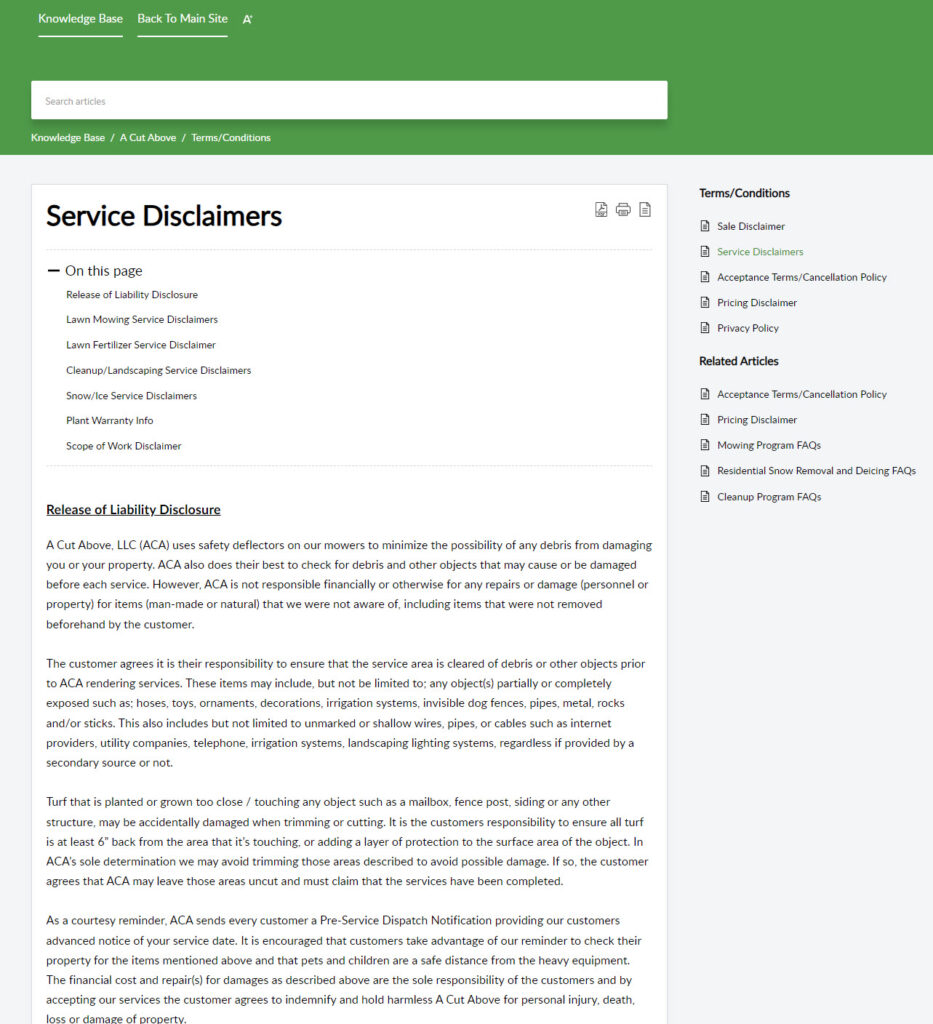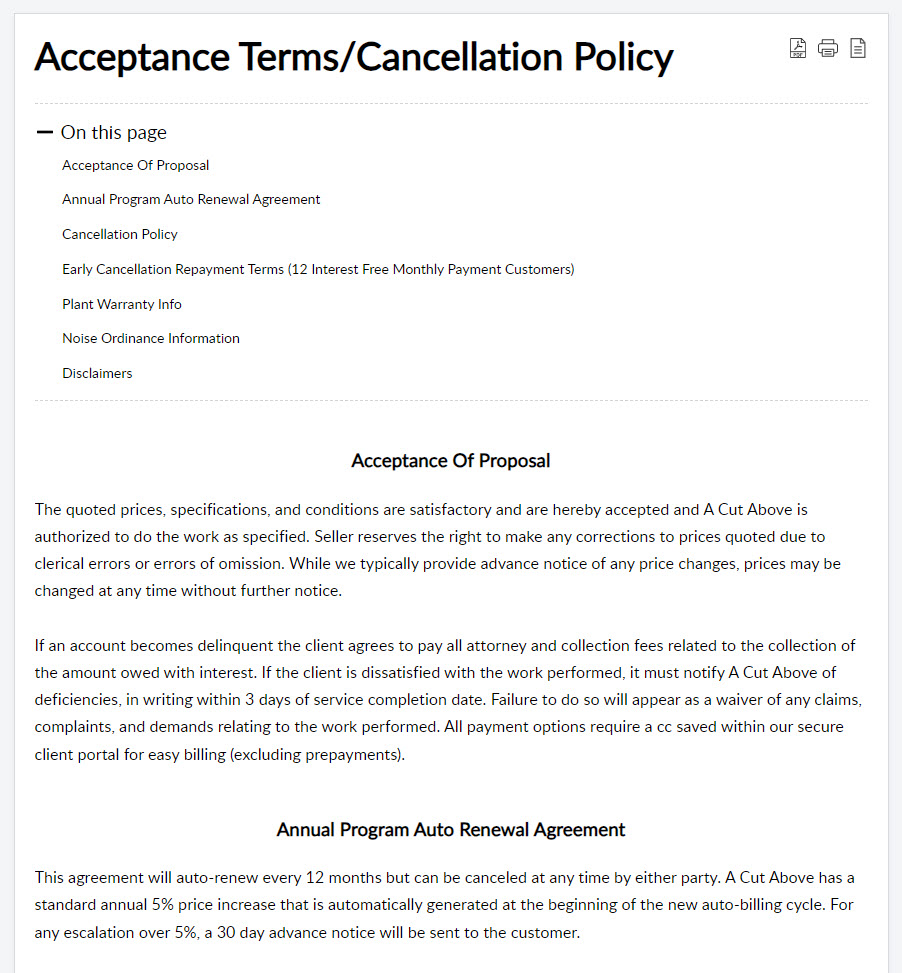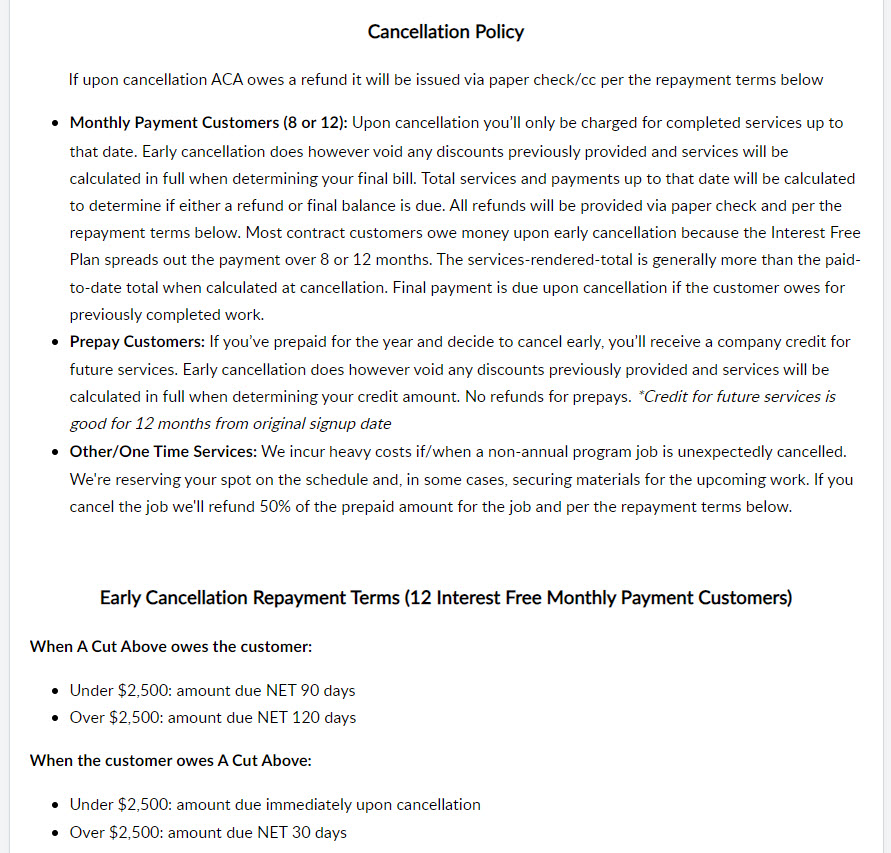Introduction
Welcome to our latest blog post, designed specifically for service business owners who understand the importance of safeguarding their operations. In today’s fast-paced and increasingly litigious world, the significance of having robust legal frameworks for your business cannot be overstated. This post focuses on two critical legal documents every service business should have: a Service Disclaimer and Terms & Conditions, which include a cancellation policy.
A Service Disclaimer acts as your first line of defense, clarifying what your business does and does not promise to clients. It’s not just about setting expectations; it’s about protecting your business from potential legal disputes. On the other hand, Terms & Conditions are the backbone of your business operations, governing the relationship between your service and your clients. They are crucial for outlining processes, setting clear policies, and ensuring both parties are on the same page. A well-drafted cancellation policy within your Terms & Conditions can save you from countless headaches, safeguarding your time and resources.
In this post, we will guide you through the essentials of creating these documents. But before we dive in, a crucial caveat: this is not legal advice. This blog is a culmination of our experiences running a service business in Virginia, and while we are excited to share our insights, it’s vital to remember that legal requirements can vary significantly from one jurisdiction to another. We always recommend consulting with a legal professional and checking local and state laws relevant to your business before finalizing any legal documents. This step ensures you are not just informed but also compliant with the law.
Stay with us as we explore the importance of these documents and provide practical tips to help you create them, ensuring your business is both protected and professional.
The Importance of a Service Disclaimer
A Service Disclaimer is a crucial yet often undervalued document in service businesses, serving as both a strategic tool for legal protection and a means of clear client communication. It’s essential for setting accurate expectations and safeguarding your business against potential legal issues. The primary purpose of a Service Disclaimer is to articulate the scope of your services, clearly indicating what is included and, importantly, what isn’t. This clarity is key in managing client expectations and reducing the risks of liability.
An effective Service Disclaimer should include several key elements. First, it should define the scope of service, offering a clear description of what your service involves and what it does not cover. This aspect is critical in setting the right client expectations from the outset. Additionally, the disclaimer should specify the limitation of your liability, outlining the extent of your responsibility. This helps in minimizing legal exposure in cases where the service may not meet client expectations. The disclaimer should also address the accuracy of information, acknowledging that while you strive for accuracy, there may be instances of outdated or no longer applicable information. If your service directs clients to third-party resources, it’s important to include a statement disclaiming liability for the content or accuracy of these external sites.
When creating your Service Disclaimer, it’s important to tailor it to your specific service model. Avoid generic disclaimers as they might not cover unique aspects of your service. The language should be clear and easy to understand, avoiding complex legal jargon that might confuse clients. Additionally, ensure that the disclaimer is easily accessible, ideally located where clients are likely to look for service-related information.
Remember, while this guide provides a foundational understanding, it’s not a substitute for professional legal advice. Laws and regulations vary widely, and it’s crucial to consult with a legal professional to ensure that your Service Disclaimer is not only effective but also compliant with the relevant laws, especially considering the legal nuances that might exist in different regions, such as Virginia.
In the next section, we’ll delve into the significance of Terms & Conditions in your business operations and how to craft them effectively.
See Sample Service Disclaimer Below
A service disclaimer is crucial as it informs users about the limitations and scope of a service, thereby setting realistic expectations and helping to mitigate legal risks. It also clarifies the terms of use and responsibilities, ensuring transparency and fostering trust between the service provider and its users.
Understanding Terms & Conditions for Service Businesses
At the heart of every service business lies a critical document: the Terms & Conditions. This isn’t just a collection of legal jargon; it’s a clear, comprehensive guide that shapes the relationship between your business and your clients. Understanding and crafting effective Terms & Conditions is key to maintaining a smooth operation, minimizing misunderstandings, and protecting your business legally.
Why Terms & Conditions Matter
- Legal Foundation: They serve as a legal contract between you and your clients, outlining what is expected from both parties.
- Clarity and Expectations: Clear terms help clients understand what they can expect from your service, including payment terms, service scope, and limitations.
- Dispute Resolution: In the event of a dispute, your Terms & Conditions can be a point of reference, helping to resolve issues more efficiently.
Essential Elements to Include
- Description of Service: Clearly define what your service includes and, importantly, what it doesn’t.
- Payment Terms: Outline payment schedules, methods, and policies on late payments or non-payments.
- Liability Limitation: Define the extent of your liability, protecting your business from undue claims.
- Privacy Policy: Address how you handle client data, an essential element in today’s digital world.
Crafting Terms & Conditions for Your Business
- Customization: Avoid one-size-fits-all templates. Tailor your Terms & Conditions to reflect the unique aspects of your service.
- Accessibility: Use clear, straightforward language. Legal terms are necessary, but your document should be understandable to non-lawyers.
- Updates: Laws and business practices evolve. Regularly review and update your Terms & Conditions to reflect these changes.
Remember, while this guide provides a foundation, it’s not a substitute for legal advice. Given the legal importance of Terms & Conditions, consulting with a legal expert, especially one familiar with your industry and local laws, is a prudent step. They can help ensure your document is not only comprehensive but also compliant with relevant regulations.
In the next section, we’ll delve into the specifics of crafting an effective cancellation policy, an integral part of your Terms & Conditions.
VIEW A SAMPLE TERMS & CONDITIONS DOCUMENT BELOW
Terms and Conditions are essential for defining the rules and guidelines of using a service or product, outlining the rights and responsibilities of both the provider and the user. This legal agreement ensures clarity in the business relationship, helping to prevent misunderstandings and protect both parties’ interests.
Crafting an Effective Cancellation Policy
A well-defined cancellation policy is a crucial component of your Terms & Conditions, especially in service-based businesses. It sets clear expectations for both you and your clients regarding the process and consequences of canceling a service. Not only does it protect your business from potential revenue loss, but it also fosters a sense of trust and professionalism with your clients.
Understanding the Importance of a Cancellation Policy
- Protects Revenue: A cancellation policy helps safeguard against last-minute cancellations, ensuring you’re compensated for your time and resources.
- Manages Client Expectations: It provides clients with a clear understanding of the protocol if they need to cancel, helping to avoid misunderstandings and disputes.
- Enhances Professionalism: A well-crafted policy reflects the professionalism of your business, showing that you have clear processes in place.
Key Elements of a Robust Cancellation Policy
- Notice Period: Define the required notice period for cancellations (e.g., 24 hours, 48 hours) to avoid penalties.
- Cancellation Fees: Outline any fees or penalties associated with late cancellations. This can be a fixed fee or a percentage of the service cost.
- Refund Policy: Clearly state your policy on refunds. Specify conditions under which a refund is permissible and the expected timeframe for processing refunds.
- Exceptions: Consider including exceptions for extraordinary circumstances (e.g., illness, emergencies) to show flexibility and empathy.
Implementing Your Cancellation Policy
- Visibility: Ensure your cancellation policy is prominently displayed and easily accessible, ideally included in your Terms & Conditions and reiterated during the booking process.
- Communication: Clearly communicate your cancellation policy to clients at the time of booking and in any pre-service reminders.
- Consistency: Apply the policy consistently across all clients to maintain fairness and professionalism.
While this section provides a framework for creating a cancellation policy, it’s important to tailor it to your business’s unique needs and to ensure it complies with local laws. Consulting with a legal professional is advisable to ensure that your policy is not only fair and clear but also legally sound. In the next section, we will guide you through creating a comprehensive Service Disclaimer tailored to your business.
Step-by-Step Guide to Creating Your Service Disclaimer
Creating a Service Disclaimer can seem daunting, especially for service businesses unfamiliar with legal documentation. However, it’s a vital step in safeguarding your business. In this section, we’ll walk you through the process step by step, ensuring you have a clear, effective disclaimer that suits your specific business needs.
Step 1: Identify the Scope of Your Services
- Begin by outlining the services you offer. Be as detailed as possible to avoid any ambiguity.
- Clearly state what is not included in your services. This helps manage expectations and prevent misunderstandings.
Step 2: Drafting the Limitation of Liability Clause
- Define the limits of your liability. This should cover scenarios where your service might not meet client expectations or result in unintended outcomes.
- Use clear language to explain that your business cannot be held liable for indirect losses or damages resulting from service use.
Step 3: Addressing the Accuracy of Information
- Include a statement acknowledging that while you strive for accuracy, there may be instances where information provided is outdated or no longer applicable.
- This disclaimer is particularly important if your service involves providing advice or information that could change over time.
Step 4: Disclaiming Third-Party Resources
- If your service involves directing clients to external resources or third-party services, include a disclaimer for the content or accuracy of these links.
- State clearly that your business is not responsible for the content or reliability of these external sources.
Step 5: Making Your Disclaimer Understandable and Accessible
- Use straightforward, jargon-free language. Your clients should be able to understand the disclaimer without legal expertise.
- Ensure the disclaimer is easily accessible, ideally on your website or service agreement, and visible to all clients.
Step 6: Legal Review and Compliance Check
- Once your draft is ready, it’s advisable to have it reviewed by a legal professional. They can ensure that it complies with local and state laws, particularly relevant if your business operates in areas with specific legal requirements, like Virginia.
- Update the disclaimer regularly to reflect any changes in your services or relevant laws.
Remember, a Service Disclaimer is your chance to set the right tone for your client relationships and protect your business. By following these steps, you can create a document that not only meets legal standards but also aligns with your business ethos and practices.
In the following section, we’ll explore how to construct a comprehensive and clear Terms & Conditions document for your service business.
Constructing Your Terms & Conditions Document
Terms & Conditions are the backbone of your service business, defining the rules and guidelines under which you operate. This document, while essential, doesn’t have to be a complex maze of legal jargon. Let’s break down the process of creating Terms & Conditions that are both comprehensive and understandable, tailored to the unique needs of your business.
Understanding the Role of Terms & Conditions Your Terms & Conditions are more than just a legal requirement; they are a communication tool that sets the stage for your client interactions. They serve multiple purposes: defining the scope of your services, outlining payment terms, and setting expectations for both you and your clients. A well-crafted document can prevent disputes and misunderstandings, fostering a smoother business operation.
Crafting the Document: A Balanced Approach
- Begin with the Basics: Start by outlining the basic information about your business, including the nature of the services you offer. This sets the context for the rest of the document.
- Define Your Service Scope: Clearly articulate what your service includes. This section should be detailed enough to cover all aspects of your service but also flexible to accommodate minor changes without needing constant updates.
- Outline Payment Terms: Clearly state your payment policies. Include details on payment schedules, acceptable payment methods, and policies on late payments or non-payments. Transparency in this section can prevent many potential conflicts.
- Establish a Clear Cancellation Policy: As discussed earlier, your cancellation policy should be clear and fair. It should outline the process for canceling a service, any applicable fees, and the conditions under which a refund is possible.
- Include a Liability Clause: This is crucial for limiting your business’s liability. Clearly state the legal limits of your responsibility towards clients and third parties.
- Privacy Policy: In today’s digital age, how you handle client data is vital. Your Terms & Conditions should include a section that addresses data collection, usage, and protection.
- Regular Updates and Review: Laws and business practices evolve. Regularly updating your Terms & Conditions ensures they remain relevant and legally compliant.
Legal Review and Customization Once you’ve drafted your Terms & Conditions, it’s prudent to have them reviewed by a legal expert, especially one familiar with your business sector and local laws. They can provide invaluable insights and ensure your document is not only legally sound but also tailored to your specific business needs.
Remember, your Terms & Conditions are as much a part of your business identity as your services. They should reflect your business’s ethos, operations, and commitment to client service. By investing time and care in crafting this document, you set a professional tone for your interactions and lay a strong foundation for your business operations.
In our next section, we will discuss best practices and legal considerations to keep in mind for these vital business documents.
Conclusion
As we wrap up our comprehensive guide, it’s clear that having a well-crafted Service Disclaimer and Terms & Conditions is more than a legal formality; it’s a fundamental aspect of running a successful service business. These documents not only provide legal protection but also foster clear communication with your clients, setting the foundation for trust and understanding in your business relationships.
Recapping the Essentials
- Service Disclaimer: This is your opportunity to clarify the scope and limits of your service, setting realistic expectations and protecting your business from potential misunderstandings.
- Terms & Conditions: These form the contract between you and your clients, outlining payment terms, service expectations, and your cancellation policy. They are vital in managing client relationships and safeguarding your business operations.
- Cancellation Policy: An integral part of your Terms & Conditions, this policy helps manage cancellations fairly and transparently, protecting your business’s interests while respecting your clients’ needs.
Taking Action
- While this guide has provided the essential steps and considerations, the journey doesn’t end here. Implementing and regularly updating these documents is crucial. Remember, they should evolve with your business and the legal landscape.
- Consulting with a legal professional, particularly one familiar with your business and local laws, is an invaluable step. They can provide personalized advice to ensure your documents are legally sound and effectively tailored to your business.
Your Role in This Journey
- You are not just a business owner; you are a steward of a service that impacts people’s lives. These documents reflect your commitment to professionalism, fairness, and quality service.
Feedback and Continuous Learning
- We encourage you to share your experiences and insights in the comments. Learning from each other strengthens our community of service business owners.
Elevate Your Business with Smart Pricing Solutions!
Dive into a new era of business efficiency with our A Cut Above Software Applications. If you’re eager to systematize your operations, our Gross Margin Pricing Calculator Application is the perfect starting point. Tailor-made for the savvy small business owner, this application is your key to swift, precise job cost calculations. Enhance your pricing strategies effortlessly and boost your profitability. Don’t let this chance slip away! Click the button, download our application, and begin your journey to smarter, more efficient business management today.





